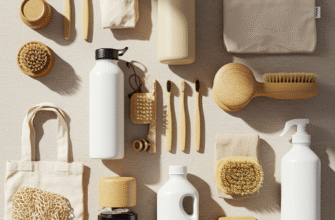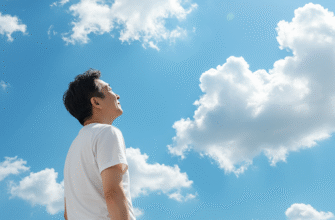Minimalism, at its core, is about intentionally living with only the things we truly need. It’s a conscious decision to declutter our lives, not just our homes, to make room for what truly matters: experiences, relationships, personal growth, and contributing to something larger than ourselves. It’s not about deprivation; it’s about liberation from the endless cycle of consumption and the stress that comes with it.
Understanding the Principles of Minimalism
Before diving into the practical aspects of a minimalist lifestyle, it’s important to grasp its fundamental principles. Minimalism isn’t about stark white walls and owning only a handful of possessions (though it can be for some!). It’s about:
- Intentionality: Being mindful of every item you bring into your life and questioning its purpose and value.
- Purpose: Focusing on what truly brings you joy and meaning, and letting go of the rest.
- Quality over Quantity: Choosing fewer, higher-quality items that will last longer and bring more satisfaction than many cheap, disposable ones.
- Freedom: Freeing yourself from the burden of excessive possessions and the pressure to constantly acquire more.
Minimalism is not a competition. It’s a personal journey. Your version of minimalism might look completely different from someone else’s, and that’s perfectly okay.
Decluttering Your Physical Space
One of the most tangible aspects of minimalism is decluttering your physical space. This can seem daunting, but breaking it down into manageable steps can make the process less overwhelming.
The KonMari Method
The KonMari Method, popularized by Marie Kondo, is a popular approach to decluttering. It involves gathering all your belongings in a particular category (e.g., clothing, books, sentimental items), holding each item, and asking yourself if it “sparks joy.” If it does, keep it. If it doesn’t, thank it for its service and let it go.
This method encourages you to be mindful of your possessions and only keep what truly brings you happiness. It can be a powerful way to identify items you’ve been holding onto out of obligation or guilt.
The Pareto Principle (80/20 Rule)
The Pareto Principle, or the 80/20 rule, states that roughly 80% of effects come from 20% of causes. In the context of minimalism, this means that you likely use only 20% of your possessions 80% of the time. Focus on identifying that 20% and letting go of the rest.
Ask yourself which items you use regularly and which are simply taking up space. Be honest with yourself and don’t be afraid to let go of items you’ve been holding onto “just in case.”
The One-In, One-Out Rule
A simple rule to prevent clutter from accumulating is the one-in, one-out rule. Whenever you bring something new into your home, commit to getting rid of something similar. This helps maintain a balance and prevents your possessions from spiraling out of control.
Don’t get discouraged if you don’t see results immediately. Decluttering is a process that takes time and effort. Be patient with yourself and celebrate your progress along the way.
Consider donating gently used items to charity or selling them online. This can give your unwanted possessions a new life and help others in need.
Minimalism Beyond Possessions
Minimalism is not just about decluttering your physical space; it’s about simplifying all aspects of your life. This can include your finances, relationships, commitments, and even your digital life.
Financial Minimalism
Financial minimalism involves simplifying your finances by focusing on what truly matters to you and cutting out unnecessary expenses. This can involve:
- Creating a budget and tracking your spending.
- Identifying areas where you can cut back on expenses.
- Paying off debt.
- Investing in experiences rather than material possessions.
By simplifying your finances, you can reduce stress and free up time and energy to pursue your passions.
Relationship Minimalism
Relationship minimalism involves focusing on nurturing meaningful relationships and letting go of toxic or draining relationships. This can involve:
- Spending quality time with loved ones.
- Setting healthy boundaries.
- Communicating openly and honestly.
- Letting go of relationships that no longer serve you.
Surrounding yourself with supportive and positive people can significantly improve your well-being.
Digital Minimalism
Digital minimalism involves intentionally using technology to support your values and goals, rather than letting it control your life. This can involve:
- Unsubscribing from unnecessary emails and notifications.
- Deleting social media apps from your phone.
- Setting time limits for social media use.
- Creating a dedicated workspace for work or study.
Taking control of your digital life can free up time and energy to focus on real-world experiences and relationships.
Commitment Minimalism
Commitment minimalism involves being selective about the commitments you make and saying no to things that don’t align with your values or goals. This can involve:
- Prioritizing your commitments.
- Saying no to requests that don’t excite you.
- Delegating tasks when possible.
- Protecting your time and energy.
By being more selective about your commitments, you can avoid burnout and focus on the things that truly matter.
Minimalism is about progress, not perfection. Don’t strive for an unattainable ideal. Focus on making small, sustainable changes that will improve your life over time.
Practical Tips for Embracing Minimalism
Here are some practical tips to help you embrace minimalism in your daily life:
- Start small: Don’t try to declutter your entire house in one day. Start with one room, one drawer, or even just one category of items.
- Ask yourself tough questions: When deciding whether to keep an item, ask yourself questions like: Do I use this regularly? Does it bring me joy? Is it necessary?
- Be mindful of your purchases: Before buying something new, ask yourself if you really need it or if you’re just buying it out of boredom or impulse.
- Embrace experiences: Focus on spending your money on experiences rather than material possessions. Travel, concerts, and classes can create lasting memories and enrich your life more than a new gadget ever could.
- Find joy in simplicity: Appreciate the beauty of a clean, uncluttered space and the freedom that comes with owning less.
- Practice gratitude: Be grateful for the things you already have and appreciate the simple pleasures in life.
Maintaining a Minimalist Lifestyle
Once you’ve embraced minimalism, it’s important to maintain it over time. This requires ongoing effort and awareness. Here are some tips for staying on track:
- Regularly declutter: Make decluttering a regular habit, even if it’s just for a few minutes each week. This will prevent clutter from accumulating and keep your space feeling fresh and organized.
- Be mindful of your consumption: Continue to be mindful of your purchases and avoid impulse buys. Ask yourself if you really need something before you buy it, and consider buying used or borrowing items whenever possible.
- Surround yourself with supportive people: Connect with others who are interested in minimalism and share your experiences and challenges.
- Re-evaluate your values: As your life changes, your values may also change. Re-evaluate your values regularly to ensure that your minimalist lifestyle continues to align with your goals and priorities.
The Benefits of a Minimalist Lifestyle
Embracing a minimalist lifestyle can have numerous benefits, including:
- Reduced stress and anxiety: A clutter-free home and simplified life can significantly reduce stress and anxiety.
- Increased focus and productivity: When you’re not surrounded by distractions, you can focus more easily on your goals and be more productive.
- More time and energy: Letting go of unnecessary possessions and commitments frees up time and energy for the things that truly matter to you.
- Improved financial stability: By spending less money on unnecessary items, you can improve your financial stability and achieve your financial goals more quickly.
- Greater happiness and fulfillment: Focusing on experiences, relationships, and personal growth can lead to greater happiness and fulfillment.
- Reduced environmental impact: Consuming less and buying used reduces your environmental impact and contributes to a more sustainable future.
Minimalism is a journey, not a destination. There will be times when you slip up and buy something you don’t need. Don’t beat yourself up about it. Just learn from your mistakes and get back on track.
The key is to be intentional and mindful of your choices and to constantly strive to simplify your life and focus on what truly matters.
Conclusion
A minimalist lifestyle is a powerful tool for creating a more intentional, fulfilling, and meaningful life. By decluttering your physical space, simplifying your finances, nurturing your relationships, and taking control of your digital life, you can free yourself from the burden of excessive possessions and focus on what truly brings you joy and purpose. Embrace the journey, be patient with yourself, and enjoy the many benefits that minimalism has to offer.








